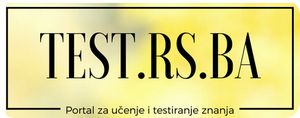While building a team culture and a sense of belonging can be challenging in optimal circumstances, believe me, the effort is worth it. A positive company culture improves recruitment, employee loyalty, job satisfaction, work performance, and employee morale and well-being. At the same time, smart managers are starting to recognize the unique challenges of building a strong culture in a remote or hybrid environment. This doesn’t mean doing so is impossible — it just requires intentional effort to create a sense of cohesion and foster interpersonal connections in today’s world.
This video will reveal a few concrete ways you can build team culture in any type of working environment, especially in Agile and Scrum environments.
Watch this video until the end because later I will show you the most persistent hair-on-fire problem, alongside the single most valuable and immediate solution, No Consultant Would Dare Tell You!
Let’s get started with…
5 Steps to Build a Team Culture
Building a team culture starts by setting examples of the culture and creating processes to guide team members toward desired behaviors. While there are many ways you could go about this, I’ve narrowed it down to five steps.
1. Communicate clearly
When it comes to creating a team culture where employees feel connected and engaged with one another, communication is key.
And it all begins with setting clear expectations about when, where, and how you will communicate. This is especially important when adapting to the challenges of a remote or hybrid environment.
So what can you do? Work with your team to establish communication norms, so everyone knows what is expected of them.
- Consider the communication norms you’d like to set for your team. What’s your preferred communication channel? What times do you tend to be available or unavailable? What’s a realistic time frame for team members to expect a response from you?
- Outline a few ways to seek input from your team members on communication norms. This might include speaking with each person in your 1:1s and asking people to share their thoughts during your next team meeting, or having team members fill out a form for you that outlines their preferences.
2. Get comfortable with feedback
Feedback is not a dirty word. I believe that feedback is fuel. Plus, feedback allows managers to develop better self-awareness, which is a critical power skill for leaders. But it can be uncomfortable to both ask for and receive feedback if you don’t have much experience doing this.
Making feedback conversations more frequent and predictable for your team can help take the fear out of feedback.
- Which resources can you share with your team to help them feel more comfortable giving and receiving feedback? Are there related books, courses, or articles you can suggest?
- Share a list of regular recurring occasions when you will ask for feedback from your team. This might be during your 1:1s, during team meetings, or as part of a retrospective after projects.
3. Encourage collaboration
We can’t assume that everyone will automatically be on the same page when it comes to working together effectively. So what can you do instead? Look to a model championed by management consulting firms, where new teams must quickly learn to work together and present a united front to clients.
One of the secrets to accomplishing this is to create a “team charter” that outlines how the group will schedule and conduct meetings, share the workload, make decisions, and communicate their specific work styles and preferences.
- Brainstorm a few different ways that you could encourage collaboration on your team. This might include asking everyone to create a “Working with me” document, agreeing on service level agreements as a team, or writing a team charter. You can also ask your team if they have any suggestions.
- What are the most important points you would like to communicate with your team about collaborating with you? Be open to adapting your collaboration preferences to those of your employees, and establish a regular cadence of communication on how this is going.
4. Stay connected
When your only interactions with your team are focused on business, it’s easy for them to feel like they’re a cog in a wheel. You can actively promote a personal connection between your team members by creating time and space for employees to connect on a personal level.
- Brainstorm a few ways you can build a sense of personal connection with your team, whether it’s through casual team get-togethers (that work for both in-person and remote team members) or by making time to chat before getting down to business in your team meetings or 1:1s.
- How can you get the rest of your team involved in fostering connection? For example, you might ask if anyone would like to plan an event or has any recommended icebreakers to use in a team meeting.
5. Publish a team vision
As a final step, you can work with your team to publish a team vision. While the team charter we covered in an earlier step focused on the WHAT and HOW of your team’s collaboration, this focuses on the WHY. Why does your team exist and what are you hoping to achieve? Putting these ideas into writing can help create a shared sense of purpose.
- What are some of the core values or concepts that you believe define your team? Make a list of a few.
- Make a plan for creating a team vision. Put a date on the calendar to discuss your initial vision with your team and invite them to add their thoughts.
Remember: Team culture is the foundation of success
Team culture isn’t just nice to have. It’s critical for engaging and retaining employees. This is the single most persistent hair-on-fire problem TODAY!
Employees leave jobs when they don’t feel valued by the organization or their manager, or if they don’t feel a sense of belonging. By spending the extra time to build a team culture, managers can play an important part in employee retention.
And as promised, here is a solution for you.
✅ Download Action Plan Template PDF - For Building A Positive Team Culture at your company. Send an email to agileandscrummasterclass (at) gmail.com (SUBJECT: Action Plan Template For Building A Positive Team Culture), and I will send it to you immediately.
Fill out this template, Follow the steps, and you will be just fine. Download your free copy before this page comes down.
Thank you.





